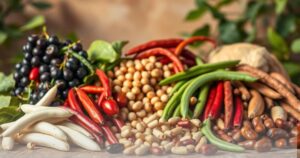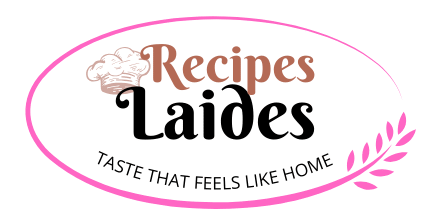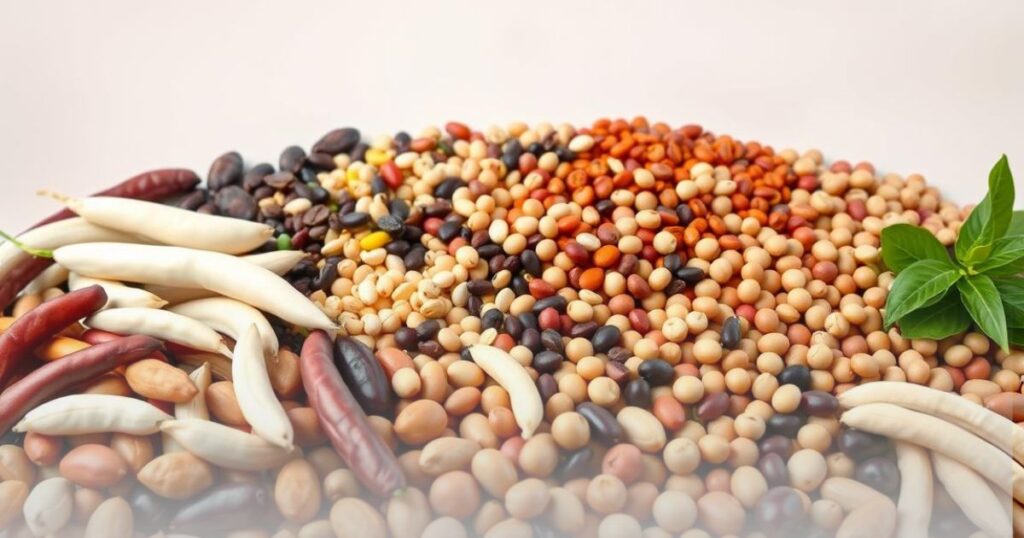What are the 15 types of beans? Beans are a nutritional powerhouse that can change your diet and cooking. They are versatile legume types that offer more than taste. Knowing about bean varieties can change your meals, whether you cook at home or love nutrition.
Discovering the 15 types of beans opens up a world of flavours and health benefits. From protein-rich black beans to creamy white navy beans, each type adds unique tastes and nutrients to your meals.
This guide will take you on a fun journey of bean discovery. You’ll learn about the wide range of legumes that can make your cooking better and support your health goals.
Key Takeaways
- Beans are nutrient-dense plant-based proteins
- Different bean varieties offer unique health benefits
- Legumes are versatile ingredients in global cuisines
- Beans provide essential minerals and fibre
- Incorporating diverse beans can improve dietary nutrition
Introduction to the World of Beans
Beans are a fascinating part of our diet, full of nutrition and flavour. They’ve been a key food for thousands of years. They offer great health benefits and are super versatile in cooking.
Beans belong to the nutrient-rich Fabaceae family and are an excellent source of protein, fibre, and essential minerals. They’re not just food; they’re a nutritional powerhouse.
The Cultural Significance of Beans
Beans have been vital in many cultures. They’re a key ingredient in Mexican and Mediterranean dishes. They provide sustainable protein, making them essential in many communities.
- Staple foods in numerous global cuisines important protein source for vegetarian and vegan diets economically valuable crop for many agricultural societies
Nutritional Benefits Overview
Knowing what beans offer can help you eat better. Legumes are a great mix of nutrients that boost health:
- High protein content
- Rich in dietary fibre
- Low in calories
- Contains essential minerals like iron and magnesium
Understanding Bean Classifications
Exploring beans means learning about their classifications. Beans are sorted by their looks, how they grow, and what they offer nutritionally. This helps us see the amazing variety in the legume family.
Beans are not just food – they’re a nutritional revolution waiting to be explored!
What are the 15 types of beans?

Beans come in a wide range of flavours, textures, and nutrients. They take us on a culinary journey across the world. Let’s explore the 15 popular bean sorts that can change your cooking and health.
Beans are a unique family of legumes with special traits. Each type adds something unique to dishes, making them key in global food.
- Adzuki Beans: Small red beans loved in Asian cooking
- Black Beans: Creamy, common in Latin American food
- Black-Eyed Peas: Unique look with a white “eye”
- Cannellini Beans: Large white beans from Italy
- Chickpeas: Nutty taste, vital in Mediterranean food
- Edamame: Young soybeans, great as a snack
- Fava Beans: Broad, flat beans with h rich taste
- Gigante Beans: Extra-large Greek white beans
- Great Northern Beans: Mild-flavoured white beans
- Kidney Beans: Deep red colour
- Lima Beans: Buttery texture, delicate taste
- Mung Beans: Small green beans in Asian dishes
- Navy Beans: Small white beans, perfect for soups
- Pinto Beans: Speckled brown beans, loved in Mexican food
- Soybeans: Protein-rich, used in many foods
Knowing about these bean types can boost your cooking and nutrition. Each has its own taste and cooking ways, making meals special.
Beans are not just food – they’re a global culinary adventure waiting to be explored!
Popular Cooking Methods and Preparation
Cooking beans can seem tough, but with the right techniques, you’ll get the hang of it. Learning about different bean types and how to prepare them will change your cooking game.
Dried vs. Canned Beans: Pros and Cons
Exploring bean types, you’ll find two main ways to cook them: dried and canned. Each method has its benefits:
- Dried Beans:
- More affordable
- Lower sodium content
- Greater flavour control
- Canned Beans:
- Convenient and quick
- Pre-cooked and ready to use
- Consistent texture
Soaking and Cooking Times
Getting beans ready right is key for tasty results. Here’s a quick guide for soaking and cooking times:
| Bean Type | Soaking Time | Cooking Time |
| Black Beans | 8-12 hours | 60-90 minutes |
| Kidney Beans | 8-12 hours | 90-120 minutes |
| Chickpeas | 12-24 hours | 120-180 minutes |
Storage Tips and Best Practices
To keep your beans fresh, follow these storage tips:
- Store dried beans in airtight containers
- Keep in cool, dark places
- Use within 1-2 years fothe r best taste
- Refrigerate opened canned beans
Pro tip: Always rinse canned beans to reduce sodium and improve digestibility!
Mediterranean and Middle Eastern Bean Varieties
Mediterranean and Middle Eastern cuisines are known for their rich legume varieties. These traditions have used common beans for thousands of years. They are a big part of regional cooking.
Chickpeas are a key bean in this area. Hummus, a popular dip made from chickpeas, is just one delicious example. These beans are full of protein and nutrients, making them essential in Mediterranean diets.
- Fava beans: A classic Mediterranean legume with a creamy texture
- Cannellini beans: Large white beans perfect for stews and salads
- Red kidney beans: Popular in hearty Middle Eastern dishes
Exploring bean varieties in Mediterranean cooking is fascinating. You’ll learn about unique cooking methods. These beans turn simple ingredients into amazing meals.
“Beans are the heart of Mediterranean cuisine, providing nutrition and flavor.” – Mediterranean Culinary Expert
Each bean variety adds something special to dishes. Fava beans, for example, have a buttery taste that goes well with grilled meats and veggies. Cannellini beans have a mild nutty flavour, which is great for creamy spreads and hearty salads.
When cooking these beans, try traditional soaking and cooking methods. They help bring out the natural flavours and make them easier to digest. Your kitchen can be a doorway to exploring these amazing Mediterranean and Middle Eastern traditions.
Asian Bean Varieties and Their Uses
Asian cuisines are filled with a wide range of bean species. These beans have played a vital role in culinary traditions for hundreds of years.They bring unique flavours, textures, and health benefits to our plates.
Asia’s bean selection is much broader than what we see in the West. This variety creates a rich culinary world. Beans are vital in both cooking and health practices, from Japan’s mountains to Southeast Asia’s tropics.
Traditional Asian Bean Preparations
Asian cultures have perfected ways to prepare beans. They aim to bring out the flavours and health benefits. Some traditional methods include:
- Fermenting beans to create compflavoursvors
- Grinding beans into fine pastes for desserts and sauces
- Roasting beans to enhance their natural nutty taste
- Sprouting beans to boost nutritional value
Popular Asian Bean-Based Dishes
Beans are the base for many famous Asian dishes. Adzuki beans are used in Japanese desserts, like sweet red bean paste. Mung beans are key in Chinese and Indian cooking, for both sweet and savoury dishes.
Health Benefits of Asian Bean Varieties
Asian bean varieties are packed with health benefits. Soybeans, for example, are a complete protein and full of minerals. Mung beans help detoxify and support digestion.
Discovering these diverse bean varieties can open up flavours and health benefits in your cooking. It’s an easy way to boost both the nutrition and flavour of your meals.
Americas’ Native Bean Types
The Americas are home to a wide variety of beans that have been grown for thousands of years. These beans are a key part of the culinary heritage of indigenous peoples. They’ve been cultivated in North America’s Rocky Mountains and the lush valleys of South America. These legumes have helped communities thrive and have shaped local cuisines.
Some of the most well-known bean varieties from the Americas include:
- Pinto beans: A staple in Mexican and Southwestern United States cuisine
- Black beans: Popular in Caribbean and Brazilian dishes
- Kidney beans are a staple in chilli, salads, and many traditional Native American dishes.
- Navy beans: Essential in Boston baked beans and other regional specialties
Each of these common bean kinds has its own unique taste and nutritional benefits. Pinto beans, for example, have a creamy texture that’s great in refried beans and stews. Black beans add a strong, earthy flavour to dishes like rice and veggie burgers.
“Beans are not just food; they are a connection to our agricultural roots and cultural identity.” – Indigenous Agricultural Expert
Exploring bean varieties native to the Americas shows that these legumes are more than just a side dish. They are a part of a rich culinary tradition that spans generations. This tradition connects modern kitchens to ancient farming practices.
Whether you’re making a traditional dish or trying something new, native American bean types are perfect for delicious and healthy meals.
Why Beans Are a Nutritional Powerhouse

Beans are not only culinary staples but also a cornerstone of nutritional well-being. Rich in fibre, plant-based protein, and essential minerals like magnesium and folate, they play a crucial role in maintaining a heart-healthy and balanced diet. According to Harvard Health, legumes such as beans can lower cholesterol levels and reduce the risk of heart disease. The USDA MyPlate guidelines recommend incorporating beans regularly for their affordability and nutrient density.
For a refreshing and protein-rich side, try pairing your bean-based meals with this flavorful chicken avocado salad, which complements legumes beautifully with healthy fats and lean protein. Beans also support digestive health thanks to their high fibre content, which, as [Medical News Today] notes, may reduce bloating and support gut microbiome diversity. Whether you’re enjoying black beans in a burrito bowl or tossing chickpeas into a Mediterranean salad, these legumes make every meal more nutritious and satisfying.
Protein Content Comparison
Beans have different amounts of protein. This makes them great for those who don’t eat meat. Here’s a look at the protein in different beans:
| Bean Variety | Protein (grams) |
| Soybeans | 28.6 |
| Lentils | 17.9 |
| Black Beans | 15.2 |
| Kidney Beans | 13.4 |
Fibre and Mineral Content
Beans are also full of fibre and minerals. They support healthy digestion, regulate blood sugar, and promote heart and bone health.
- Improved digestive health
- Stable blood sugar levels
- Enhanced heart function
- Stronger bone density
Dietary Considerations
Beans are good for most people, but everyone is different. People with digestive sensitivities should introduce beans gradually. If you have health issues, talk to a nutrition expert.
Beans: Nature’s multivitamin in a pod!
Conclusion
Exploring bean diversity opens a world of nutritional powerhouses. From Mediterranean to Asian varieties, the 15 types of beans we’ve discussed offer incredible versatility in cooking and nutrition. Each bean brings unique flavours, textures, and health benefits to your kitchen.
Knowing the 15 types of beans can change how you plan meals. Beans such as black beans, kidney beans, and chickpeas are rich in protein, fibre, and essential minerals.. These legumes are a global culinary treasure, not just simple side dishes.
Embracing bean diversity expands your culinary horizons. Whether making a heartychillii, creamy hummus, or a nutritious salad, beans offer endless possibilities. By trying different bean varieties, you’ll make your meals better and improve your nutrition.
As you continue your culinary journey, remember that beans are more than food. They connect us to global cuisines, traditional cooking, and sustainable nutrition. Start experimenting with these versatile legumes and discover the delicious world waiting in your pantry.


